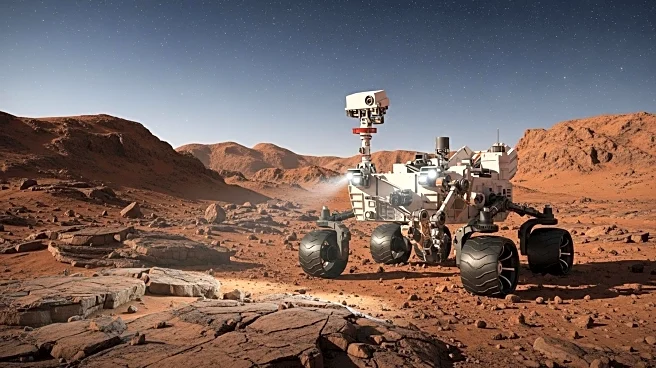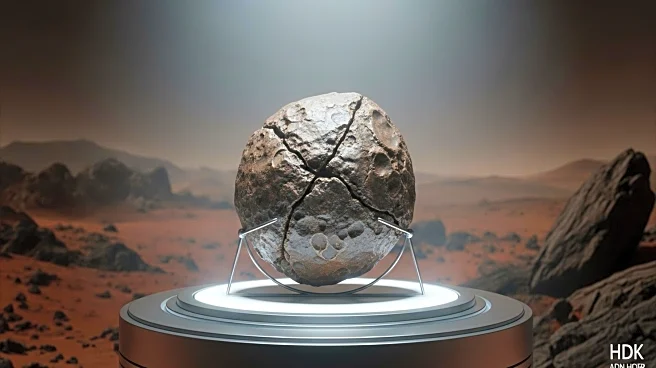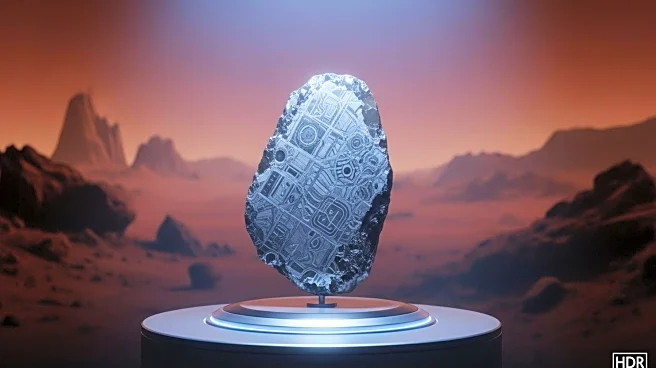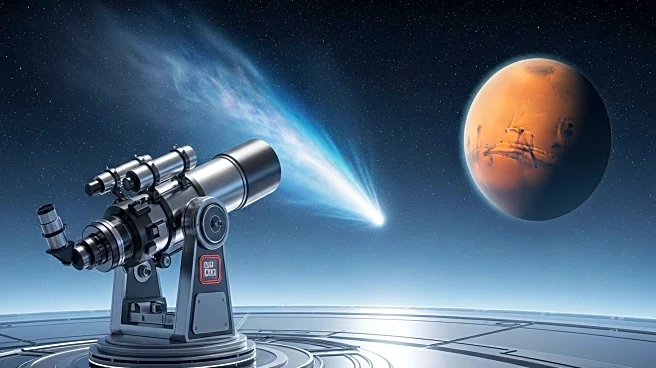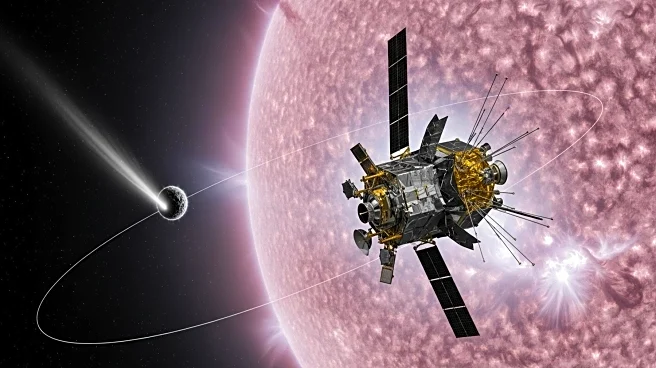What's Happening?
NASA's InSight lander, which launched toward Mars on May 5, 2018, and operated for over four years, has provided seismic data revealing insights into Mars' mantle. Unlike Earth, Mars has a single-plate surface, allowing its mantle to preserve its early internal history. Analysis of seismic data from the InSight lander showed delays in high-frequency P-wave arrivals in Mars' deeper mantle, indicating subtle variations in its composition. These variations are remnants of early Martian history, including massive impacts and magma ocean crystallization, preserved due to the lack of plate tectonics. The study suggests that Mars' mantle offers a unique opportunity to understand the geological history and thermochemical evolution of a planet under a stagnant lid, a common tectonic regime in the solar system.
Why It's Important?
The findings from Mars' mantle provide crucial evidence about planetary origin and evolution, offering insights into how rocky worlds form and evolve. Unlike Earth, where active plate tectonics continually stir the mantle, Mars' preserved mantle heterogeneity offers an unprecedented window into the geological history and thermochemical evolution of terrestrial planets. This understanding holds key implications for the preconditions for habitability of rocky bodies across the solar system and beyond. The preserved diversity in Mars' mantle suggests it resulted from highly energetic processes, including massive impacts and magma ocean crystallization, which are crucial for understanding the planet's early history.
What's Next?
Further analysis of Mars' mantle could provide more detailed insights into the planet's geological history and evolution. Understanding the preserved heterogeneity in Mars' mantle could help scientists develop models for the formation and evolution of other rocky planets in the solar system. This research could also inform future missions to Mars, focusing on exploring its geological history and potential habitability.
